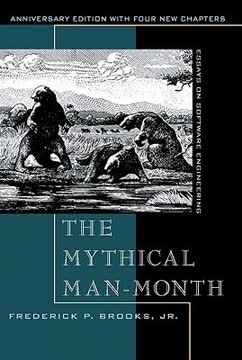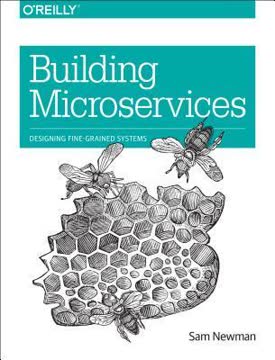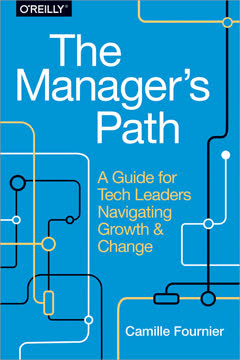نکات کلیدی
1. پایگاههای داده گرافی در مدیریت دادههای به شدت متصل برتری دارند
گرافها ساختارهایی واقعاً شگفتانگیز هستند. درک ما از آنها بر پایه صدها سال مطالعه ریاضی و علمی استوار است. با این حال، ما تازه شروع به درک چگونگی استفاده از آنها در زندگی شخصی، اجتماعی و تجاری خود کردهایم.
چالشهای دادههای متصل: پایگاههای داده رابطهای سنتی با دادههای به شدت متصل مشکل دارند و با افزایش تعداد پیوندها با مشکلات عملکردی مواجه میشوند. پایگاههای داده گرافی این مشکل را با استفاده از یک مدل شبکه که به طور طبیعی روابط را نمایش میدهد و به طور کارآمدی آنها را جستجو میکند، حل میکنند.
موارد استفاده: پایگاههای داده گرافی در حوزههایی با روابط پیچیده میدرخشند:
- شبکههای اجتماعی
- موتورهای توصیهگر
- تشخیص تقلب
- عملیات شبکه و فناوری اطلاعات
- مدیریت دادههای اصلی
مزایای عملکردی: برای جستجوهایی که شامل چندین اتصال هستند، پایگاههای داده گرافی میتوانند به مراتب سریعتر از پایگاههای داده رابطهای باشند، به ویژه با افزایش اندازه و پیچیدگی دادهها.
2. گرافهای ویژگی یک مدل داده انعطافپذیر و شهودی ارائه میدهند
مدل گراف ویژگیدار برچسبدار (در پیوست A، مدلهای داده گرافی جایگزین را با جزئیات بیشتری بررسی میکنیم). یک گراف ویژگیدار برچسبدار دارای ویژگیهای زیر است:
اجزای کلیدی:
- گرهها: نمایانگر موجودیتها
- روابط: گرهها را متصل میکنند، نامگذاری شده و جهتدار هستند
- ویژگیها: جفتهای کلید-مقدار بر روی هر دو گرهها و روابط
- برچسبها: دستهبندی گرهها (چندین برچسب برای هر گره مجاز است)
مزایا:
- شهودی: به طور نزدیکی با نحوه طبیعی تفکر و ترسیم دادهها همخوانی دارد
- انعطافپذیر: به راحتی نیازها و ساختارهای داده در حال تغییر را میپذیرد
- بیانگر: سناریوهای پیچیده را با وضوح به تصویر میکشد
دوستدار تخته سفید: مدل گراف ویژگیدار اغلب به توسعهدهندگان اجازه میدهد تا ساختارهای دادهای را که در مراحل تحلیل و طراحی ترسیم شدهاند، به طور مستقیم پیادهسازی کنند.
3. Cypher: یک زبان پرسوجوی بیانی قدرتمند برای گرافها
Cypher یک زبان پرسوجوی گرافی بیانی (اما فشرده) است. اگرچه در حال حاضر خاص Neo4j است، نزدیکی آن با عادت ما در نمایش گرافها به صورت نمودارها، آن را برای توصیف برنامهریزی شده گرافها ایدهآل میسازد.
الگوهای هنر ASCII: Cypher از هنر ASCII شهودی برای توصیف الگوهای گراف استفاده میکند، که پرسوجوها را خوانا و نوشتنی میسازد.
اجزای کلیدی:
- MATCH: مشخص کردن الگوهایی که باید در گراف پیدا شوند
- WHERE: فیلتر کردن نتایج
- RETURN: مشخص کردن دادههایی که باید بازیابی شوند
- CREATE/MERGE: افزودن دادههای جدید به گراف
ماهیت بیانی: توسعهدهندگان توصیف میکنند که چه چیزی میخواهند پیدا کنند، نه چگونه آن را پیدا کنند، که به پایگاه داده اجازه میدهد تا اجرای پرسوجو را بهینهسازی کند.
4. مدلسازی گراف بر روابط بین موجودیتها تمرکز دارد
مدلسازی گراف به طور طبیعی با نحوهای که ما تمایل داریم جزئیات را از یک حوزه با استفاده از دایرهها و جعبهها انتزاع کنیم و سپس اتصالات بین این چیزها را با پیوستن آنها با پیکانها و خطوط توصیف کنیم، همخوانی دارد.
مدلسازی مبتنی بر حوزه: مدلهای داده گرافی به طور نزدیکی ساختار حوزه مسئله را منعکس میکنند و فاصله معنایی بین مدلهای مفهومی و پیادهسازی پایگاه داده را کاهش میدهند.
توسعه تکراری: مدلهای گراف به راحتی با تغییر نیازها تکامل مییابند:
- افزودن انواع گره و روابط جدید
- گسترش ساختارهای موجود بدون اختلال در پرسوجوهای فعلی
- بازسازی با معرفی یا حذف گرههای میانی
بهترین شیوهها:
- مدلسازی برای الگوهای پرسوجو، نه فقط ذخیرهسازی داده
- استفاده از نامهای معنادار برای روابط
- در نظر گرفتن روابط دوطرفه در صورت لزوم
- استفاده از برچسبهای گره برای دستهبندی موجودیتها
5. پردازش بومی گراف امکان پیمایشهای با عملکرد بالا را فراهم میکند
یک موتور پایگاه داده که از مجاورت بدون شاخص استفاده میکند، موتوری است که در آن هر گره به طور مستقیم به گرههای مجاور خود ارجاع میدهد. بنابراین هر گره به عنوان یک شاخص کوچک از دیگر گرههای نزدیک عمل میکند، که بسیار ارزانتر از استفاده از شاخصهای جهانی است.
مجاورت بدون شاخص: گرهها به طور مستقیم به همسایگان خود ارجاع میدهند و نیاز به جستجوی شاخصها در طول پیمایشها را از بین میبرند.
پیامدهای عملکردی:
- زمان پیمایش متناسب با تعداد گرههای بازدید شده است، نه اندازه کل گراف
- امکان ناوبری بسیار سریع روابط را فراهم میکند
- به ویژه برای پرسوجوهای محلی کارآمد است (مثلاً یافتن دوستان دوستان)
تضاد با مدل رابطهای: پیوندها در پایگاههای داده رابطهای با افزایش اندازه دادهها به طور فزایندهای گران میشوند، در حالی که پیمایشهای گرافی عملکردی ثابت را حفظ میکنند.
6. پایگاههای داده گرافی از تراکنشهای ACID و مقیاسپذیری پشتیبانی میکنند
تراکنشها در Neo4j از نظر معنایی با تراکنشهای پایگاه داده سنتی یکسان هستند. نوشتنها در یک زمینه تراکنش رخ میدهند، با قفلهای نوشتن که برای اهداف سازگاری بر روی هر گره و رابطهای که در تراکنش دخیل است، گرفته میشوند.
پشتیبانی از ACID: بسیاری از پایگاههای داده گرافی، از جمله Neo4j، پشتیبانی کامل از تراکنشهای ACID (اتمی، سازگاری، جداسازی، دوام) را ارائه میدهند.
گزینههای مقیاسپذیری:
- مقیاسپذیری خواندن: توزیع پرسوجوهای خواندن در چندین نسخه
- مقیاسپذیری نوشتن: برخی از پایگاههای داده گرافی شاردینگ برای مقیاسپذیری نوشتن ارائه میدهند
- شاردینگ کش: بهینهسازی برای پرسوجوهای محلی گراف در سراسر خوشه
دسترسپذیری بالا: استراتژیهای خوشهبندی و تکرار، عملیات مداوم و سازگاری دادهها را تضمین میکنند.
7. الگوریتمهای نظریه گراف بینشهای پیشبینیکننده را باز میکنند
تکنیکهای نظریه گراف به طور گستردهای برای طیف وسیعی از مشکلات قابل استفاده هستند. آنها به ویژه زمانی مفید هستند که ما ابتدا بخواهیم بینشی در مورد یک حوزه جدید کسب کنیم — یا حتی بفهمیم چه نوع بینشی میتوان از یک حوزه استخراج کرد.
الگوریتمهای کلیدی:
- کوتاهترین مسیر (مثلاً الگوریتم دیکسترا)
- اندازهگیریهای مرکزیت
- تشخیص جامعه
- محاسبات شباهت
قدرت پیشبینی: الگوریتمهای گراف میتوانند الگوها و اتصالات پنهان را آشکار کنند:
- شناسایی تأثیرگذاران در شبکههای اجتماعی
- تشخیص حلقههای تقلب احتمالی
- بهینهسازی زنجیرههای تأمین و لجستیک
- بهبود سیستمهای توصیهگر
ادغام با یادگیری ماشین: ویژگیها و الگوریتمهای گراف میتوانند مدلهای یادگیری ماشین سنتی را تقویت کنند و اطلاعات اضافی در مورد زمینه و روابط ارائه دهند.
آخرین بهروزرسانی::
FAQ
What’s Graph Databases by Ian Robinson about?
- Core introduction: Graph Databases by Ian Robinson introduces the fundamentals of graph databases, focusing on the labeled property graph model and how it represents and queries connected data.
- Scope and approach: The book covers graph theory basics, graph database technologies, data modeling, application development, and real-world use cases, using Neo4j and Cypher as primary examples.
- Industry impact: It highlights how graph databases transform industries like social networking, IoT, retail, and telecommunications by enabling better performance and flexibility.
- Audience: The book is aimed at developers, database professionals, and decision-makers seeking practical understanding and implementation guidance.
Why should I read Graph Databases by Ian Robinson?
- Understanding connected data: The book explains why traditional databases struggle with connected data and how graph databases excel at modeling and querying complex relationships.
- Practical guidance: Readers receive hands-on advice for graph data modeling, querying with Cypher, application architecture, and testing strategies, making it suitable for real-world projects.
- Future-proofing skills: As graph databases become mainstream, the book prepares readers to participate in this shift and innovate with graph technology.
- Industry relevance: Real-world examples and case studies demonstrate the business value and agility that graph databases bring to enterprises.
What are the key takeaways from Graph Databases by Ian Robinson?
- Graph model advantages: Graph databases offer performance, flexibility, and agility for connected data, outperforming relational and other NoSQL databases in these areas.
- Native graph processing: Concepts like index-free adjacency and native storage enable constant-time traversals and efficient querying.
- Iterative modeling: The book emphasizes iterative, test-driven development and evolving data models to match changing business needs.
- Real-world impact: Case studies show how graph databases power social recommendations, access control, logistics, and more, delivering business responsiveness and innovation.
What is the labeled property graph model in Graph Databases by Ian Robinson?
- Definition: The labeled property graph model consists of nodes (entities) and relationships (connections), both of which can have properties (key-value pairs) and labels.
- Expressiveness: Relationships are directed and named, allowing for rich semantic modeling and supporting complex, variably structured data.
- Schema flexibility: The model is schema-free and additive, enabling easy evolution of the data model without disrupting existing applications.
- Foundation for querying: This model underpins the book’s examples and is central to the power and flexibility of graph databases.
How does Graph Databases by Ian Robinson compare graph databases to relational and NoSQL databases?
- Relational limitations: Relational databases require expensive joins for connected data, leading to poor performance and rigid schemas.
- NoSQL differences: Other NoSQL stores (key-value, document, column family) lack first-class relationships, making connected data management complex and inefficient.
- Graph database strengths: Graph databases treat relationships as first-class citizens, enabling fast traversals and efficient querying of highly connected data.
- Consistency and transactions: Graph databases like Neo4j maintain ACID transactions, providing strong consistency, unlike many NoSQL stores that relax consistency for scalability.
What are the main benefits of using graph databases according to Graph Databases by Ian Robinson?
- Performance: Graph databases deliver millisecond query responses for connected data, with execution time based on the traversed subgraph rather than the entire dataset.
- Flexibility: The schema-free, additive nature allows for easy evolution of the data model, reducing migration and maintenance overhead.
- Agility: Graph databases support agile and test-driven development, enabling rapid iteration and alignment with business needs.
- Business impact: Organizations benefit from accelerated development cycles, extreme responsiveness, and the ability to model complex domains naturally.
How does Graph Databases by Ian Robinson explain graph data modeling best practices?
- Modeling approach: Entities are modeled as nodes, and their connections as relationships, closely reflecting real-world semantics.
- Iterative development: The book advocates for iterative, incremental modeling, testing with representative data, and evolving the model as requirements change.
- Avoiding anti-patterns: It warns against encoding entities as relationships and stresses explicit modeling for clarity and queryability.
- Handling complexity: Techniques for representing complex values and time (e.g., versioned graphs, timeline trees) are discussed to support evolving schemas.
How does Graph Databases by Ian Robinson teach querying with Cypher?
- Cypher introduction: Cypher is presented as an expressive, declarative query language that uses ASCII-art patterns to match graph structures.
- Core clauses: The book covers essential Cypher clauses like MATCH, WHERE, RETURN, CREATE, and MERGE, with practical examples.
- Idiomatic queries: Readers are encouraged to write idiomatic queries that start from known nodes and traverse local neighborhoods for performance.
- Optimization tips: The book advises on restricting variable-length paths and precomputing relationships for performance-critical queries.
What application architectures and development practices are recommended in Graph Databases by Ian Robinson?
- Deployment modes: Neo4j can run embedded within applications (JVM-only, low latency) or as a standalone server (platform-independent, REST API).
- Server extensions: For complex logic, server extensions allow custom Java code to run inside Neo4j, enabling domain-specific RESTful services.
- Test-driven development: The book emphasizes test-driven modeling and query development, using small graphs and unit tests for continuous validation.
- Performance testing: Strategies for application and server extension performance testing are discussed to ensure regression safety and scalability.
How does Graph Databases by Ian Robinson address production planning, performance, and scaling?
- Capacity planning: The book discusses balancing cost, performance, redundancy, and load, with advice on JVM heap sizing, page cache allocation, and disk speed.
- Clustering: Neo4j supports master-slave clustering for high availability and horizontal read scaling, with recommendations for directing writes and balancing reads.
- Cache strategies: Techniques like cache sharding and consistent routing are suggested to improve cache locality and performance.
- Consistency management: Strategies for ensuring read-your-own-write consistency in eventually consistent clusters are explained.
What real-world use cases and case studies are highlighted in Graph Databases by Ian Robinson?
- Social recommendations: Talent.net uses graph queries to infer social relations and recommend experts based on shared interests and work history.
- Authorization and access control: TeleGraph Communications manages complex access control for millions of users and resources using fine-grained permission models in a graph.
- Geospatial logistics: Global Post models parcel delivery networks as graphs with timestamped relationships, supporting route calculation and schema evolution.
- Business impact: These case studies illustrate how graph databases enable real-time analytics, agility, and business innovation.
What are the best quotes from Graph Databases by Ian Robinson and what do they mean?
- On graph power: “Graphs are truly remarkable structures... we’re only just beginning to understand how to apply them to our personal, social, and business lives.” This highlights the untapped potential of graph technology.
- On native processing: “A database engine that utilizes index-free adjacency... acts as a micro-index of other nearby nodes, which is much cheaper than using global indexes.” This explains the performance advantage of native graph databases.
- On triadic closure: “The empirical evidence... suggests that the tendency toward triadic closure is real and substantial.” This underscores the importance of social graph theory in understanding network evolution.
- On idiomatic queries: “Idiomatic queries have beneficial side effects... tend to exploit caches better and run faster than nonidiomatic queries.” This emphasizes the value of writing queries that align with graph database architecture for optimal performance.
نقد و بررسی
کتاب پایگاههای داده گراف نقدهای متفاوتی دریافت کرده است و بهطور میانگین امتیاز 3.63 از 5 را کسب کرده است. خوانندگان از معرفی مفاهیم پایگاه داده گراف و Neo4j در این کتاب قدردانی میکنند، اما تمرکز آن بر Neo4j بهجای پایگاههای داده گراف بهطور کلی را مورد انتقاد قرار میدهند. کتاب بهخاطر توضیحات واضح و مثالهای دنیای واقعی تحسین میشود، اما برخی آن را بیش از حد مشتاقانه و فاقد عمق فنی میدانند. بسیاری از منتقدان به ارزش آن بهعنوان یک راهنمای ابتدایی برای کسانی که تازه با پایگاههای داده گراف آشنا میشوند اشاره میکنند، در حالی که خوانندگان با تجربهتر ممکن است آن را بیش از حد ساده بیابند. سبک نوشتار و ساختار کتاب نیز نظرات مثبت و منفی دریافت کرده است.
Similar Books














